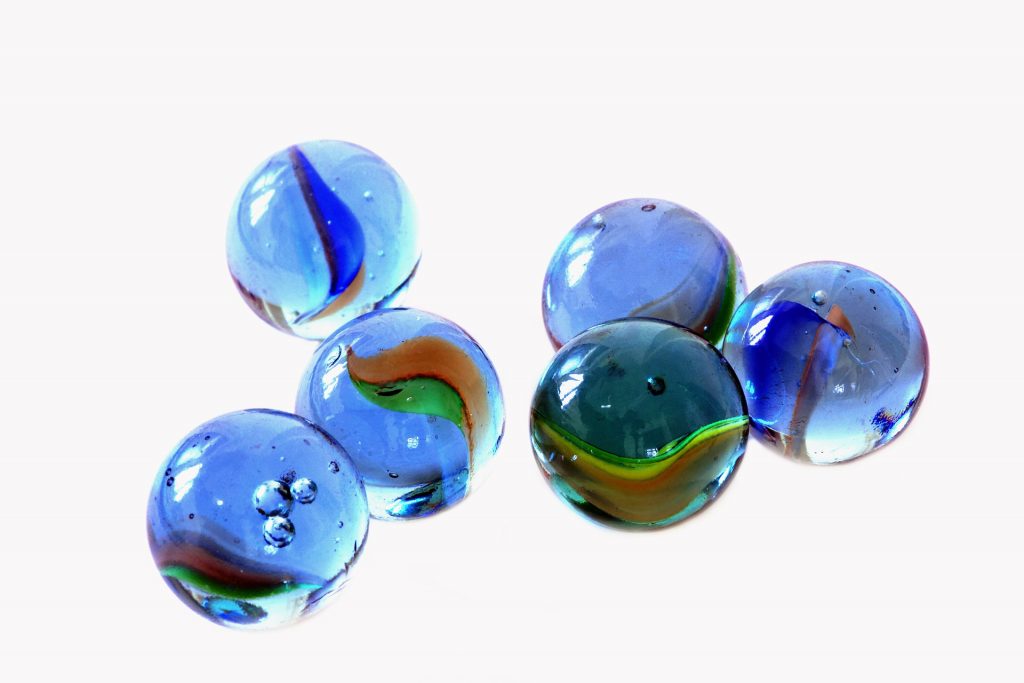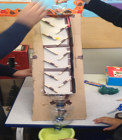Finding your marbles!

As children, we played with marbles. We were fascinated by the way they felt, how they moved, their colours. They were something that we could carry around with us; not too large and not too small. We may have moved on to larger toys and then mobile devices, yet a marble, a type of ball, can still hold hours and hours of fun.
In this blog, PSTT Regional Mentor Kulvinder Johal considers how this simple toy, and creation of a marble run, can help develop children’s understanding of forces and movement.
What happens when marbles hit each other? Why do they roll better on tiles than on carpet? Curiosity here leads to beginning to understand forces and movement, friction and speed. Do bigger marbles move faster than smaller ones? Are the bigger ones actually more ‘powerful’ than smaller ones, or is this somehow connected to the speed with which they travel, their mass or the energy that’s given to them that holds that power? So many questions….. I want to find my marbles! Are they here somewhere in the corner of the toy box? Perhaps they’re somewhere under the sofa? Just through simple play and observation, we are learning that the friction between the carpet fibres and the marble are somehow slowing it down. On tiles, both marble and surface are smooth and the marble speeds along the surface, often moving so fast that we are not sure where it went! Whilst enjoying the play, asking simple questions and providing opportunities for talk will go a long way in encouraging children to link observations to actions, helping them to develop an understanding of science in the world around them.
So how can we progress this further? Another idea for a lone marble is to explore its motion in a marble run. Using junk and recycling from around the house, it is very easy to get absorbed in creating your own marble run. Will it stand alone, or lean on some furniture? How will you collect the marble at the bottom (perhaps in a bottle, in your hands, in a tray or simply allow it to hit the floor)? Below are some suggestions to get you and your children started. As the device develops, help children see how science plays its part: as you release the marble, it might rub against cardboard and create friction, which slows it down. Gravity, the force pulling the marble downwards, can be utilised to create movement – ensure children understand that gravity is always present, pulling objects towards the centre of the Earth. Angles are key in the design – they can help to speed the marble up or slow the marble down. And of course if you have access to marbles of different sizes, you can develop ideas about inertia and momentum – these concepts are not on any primary curriculum, but young children can understand that it’s hard to get heavy things to start moving, but once they do, it can be hard to get them to stop!
Amongst all the possible questions that you might generate, remember that any interaction, showing interest and enjoyment and playing as an adult are important and that children will form their own ideas and explanations, and ask and find answers to their own questions, depending on their age and other experiences. You don’t need to have all the answers!
Making a marble run
 Equipment:
Equipment:
• Cardboard boxes
• Empty kitchen / toilet rolls
• Newspaper
• Plastic bottles
• Pringles boxes
• Scissors
• lollysticks
• Sellotape/masking tape/glue
Advice on building a marble run:
Decide on whether you are marking a very long marble run, or perhaps just keeping it contained within a specific area, like a cereal box.
Cut cardboard tubes in half, lengthways, to act as runs and attach them at various angles using masking tape.
Once you are happy with your angles, decide how you will collect your marble at the end of the run. You may want to add a plastic bottle at the bottom/a plastc cup/a tray or a box etc. to stop the marble shooting off and away into an inconvenient place.
Test the run to see if the marble is running as you expect/want it to go.
You may need to change the positioning of the cardboard tubes to improve the movement of the marble.
Taking it further:
Can you make a marble run with a bend in it?
How can you slow the marble down as it travels?
Can you design and build a marble run with a ‘drop’ in it and keep the marble moving?
No time to construct a marble run? Take a look at this online marble rollercoaster: https://wowscience.co.uk/resource/marbleous-marvel-coaster/
Would you like to investigate friction? Find out more here: https://wowscience.co.uk/resource/an-investigation-of-friction/
H&S:
Remind children to be careful when cutting cardboard; adult supervision may be required.
Back to blog



 QUICK
QUICK
 MEDIUM
MEDIUM LONG
LONG





